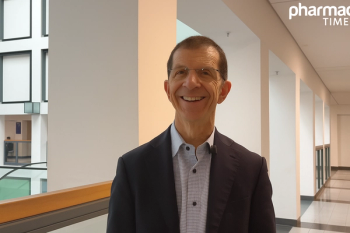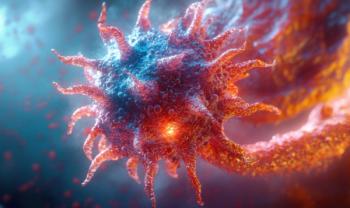
Pair of Nivolumab Regimens Approved to Treat Unresectable Advanced or Metastatic Esophageal Squamous Cell Carcinoma
Nivolumab (Opdivo) with fluoropyrimidine- and platinum-containing chemotherapy and nivolumab plus ipilimumab (Yervoy) approved as first-line treatments for unresectable advanced or metastatic esophageal squamous cell carcinoma.
The FDA has approved a pair of new nivolumab (Opdivo) combination therapies—nivolumab with fluoropyrimidine- and platinum-containing chemotherapy; as well as nivolumab plus ipilimumab (Yervoy), as first-line treatments for adults with unresectable advanced or metastatic esophageal squamous cell carcinoma (ESCC), irrespective of programmed death-ligand 1 (PD-L1) status.1
“Unresectable advanced or metastatic ESCC is a challenging disease, and there’s a need for additional treatment options that may extend survival in the first-line setting,” said Jaffer A. Ajani, MD, lead investigator of CheckMate-648, and professor of Gastrointestinal Medical Oncology at The University of Texas MD Anderson Cancer Center, in a press release. “In the CheckMate-648 trial, 2 nivolumab-based combinations showed a survival benefit compared to chemotherapy alone, offering new treatment options regardless of PD-L1 status.”
The approval was based on findings from the global, randomized, open-label phase 3 CheckMate-648 trial (NCT03143153), which found that nivolumab plus chemotherapy or ipilimumab significantly improved overall survival (OS) compared with chemotherapy alone in the all-randomized patient population and in a subset of individuals with a PD-L1 expression of 1% or higher.2
CheckMate-648 enrolled patients with unresectable advanced, recurrent, or metastatic ESCC. Patients were required to have an ECOG performance status of 0 or 1 and measurable disease, and could not have received prior systemic therapy for advanced disease.
Study participants (n = 970) were randomized 1:1:1 to receive nivolumab at 240 mg every 2 weeks plus fluorouracil and cisplatin every 4 weeks (n = 321), nivolumab at 3 mg/kg every 2 weeks plus ipilimumab at 1 mg/kg every 6 weeks (n = 325), or fluorouracil plus cisplatin every 4 weeks (n = 324). The primary end points of the trial included OS and progression-free survival (PFS) in a subset of patients with a PD-L1 expression of 1% or higher. Key secondary end points included OS and PFS in the all-randomized patient population and objective response rate (ORR) in both populations.
In the all-randomized patient cohort, median OS with nivolumab plus chemotherapy was 13.2 months (95% CI, 11.1-15.7) compared with 10.7 months (95% CI, 9.4-11.9) in those administered chemotherapy alone, which translates to a 39% decrease in the risk of death (HR, 0.74; 95% CI, 0.61-0.90; P = .0021). Median PFS was 5.8 months (95% CI, 5.6-7.0) in the nivolumab plus chemotherapy cohort compared with 5.6 months (95% CI, 4.3-5.9) with chemotherapy alone (HR, 0.81; 95% CI, 0.67-0.99; P = not significant).
Among patients with PD-L1 expression of 1% or higher, median OS with nivolumab plus chemotherapy was 15.4 months (95% CI, 11.9-19.5) compared with 9.1 months (95% CI, 7.7-10) with chemotherapy alone, which translates to a 46% decrease in the risk of death (HR, 0.54; 95% CI, 0.41-0.71; P < .0001). Median PFS in the nivolumab plus chemotherapy cohort was 6.9 months (95% CI, 5.7-8.3) compared with 4.4 months (95% CI, 2.9-5.8) in the chemotherapy alone cohort (HR, 0.63; 95% CI, 0.49-0.86; P = .0023).
The immunotherapy combination of nivolumab plus ipilimumab produced a median OS of 13.7 months (95% CI, 11.2-17.0) compared with 9.1 months (95% CI, 7.7-10) with chemotherapy alone among patients with a PD-L1 expression of 1% or higher, which translates to a 36% decrease in the risk of death (HR, 0.64; 95% CI, 0.49-0.84; P = .0010). Among the all-randomized population, median OS was 12.8 months (95% CI, 11.3-15.5) with nivolumab and ipilimumab compared with 10.7 months (95% CI, 9.4-11.9) with chemotherapy alone, which translates to a decrease in the risk of death by 22% (HR, 0.78; 95% CI, 0.65-0.95; P = .0110).
Among patients with PD-L1 expression of 1% or higher, median PFS with nivolumab plus ipilimumab was 4.0 months (95% CI, 2.4-4.9) compared with 4.4 months (95% CI, 2.9-5.8) among those administered chemotherapy alone (HR, 1.02; 95% CI, 0.78-1.34), which did not achieve statistical significance.
The median duration of response (DOR) among patients with a PD-L1 expression of 1% or higher in the investigative and control cohorts was 8.4 months (95% CI, 6.9-12.4) and 5.7 months (95% CI, 4.4-8.7), respectively. In the all-randomized patient population, median DOR was 8.2 months (95% CI, 6.9-9.7) and 7.1 months (95% CI, 5.7-8.2), respectively.
The immunotherapy combination produced an ORR of 35% (95% CI, 28%-43%) compared with 20% (95% CI, 14%-27%) among patients with a PD-L1 expression of 1% or higher who were administered chemotherapy alone. In the all-randomized patient population, rates were 28% (95% CI, 23%-33%) and 27% (95% CI, 22%-32%), respectively.
Among patients with a PD-L1 expression of 1% or higher, median DOR with nivolumab plus ipilimumab was 11.8 months (95% CI, 7.1-27.4) compared with 5.7 months (95% CI, 4.4-8.7) with chemotherapy alone. Among all-randomized patients, median DOR was 11.1 months (95% CI, 8.3-14.0) in the investigative cohort compared with 7.1 months (95% CI, 5.7-8.2) in the control group.
Nivolumab monotherapy and in combination with ipilimumab has been linked to severe and fatal immune-mediated adverse events (AEs), such as pneumonitis, colitis, hepatitis and hepatotoxicity, endocrinopathies, nephritis and renal dysfunction, dermatologic adverse reactions, other immune-mediated AEs.
References
- US Food and Drug Administration approves two Opdivo (nivolumab)-based regimens as first-line treatments for unresectable advanced or metastatic esophageal squamous cell carcinoma. News release. Bristol Myers Squibb. May 27, 2022. Accessed May 27, 2022. https://bit.ly/3PMxNeb
- Chau I, Doki Y, Ajani JA, et al. Nivolumab (NIVO) plus ipilimumab (IPI) or NIVO plus chemotherapy (chemo) versus chemo as first-line (1L) treatment for advanced esophageal squamous cell carcinoma (ESCC): first results of the CheckMate 648 study. J Clin Oncol. 2021;39(suppl 15):LBA4001. doi:10.1200/JCO.2021.39.15_suppl.LBA4001
Newsletter
Stay informed on drug updates, treatment guidelines, and pharmacy practice trends—subscribe to Pharmacy Times for weekly clinical insights.















































































































































































































